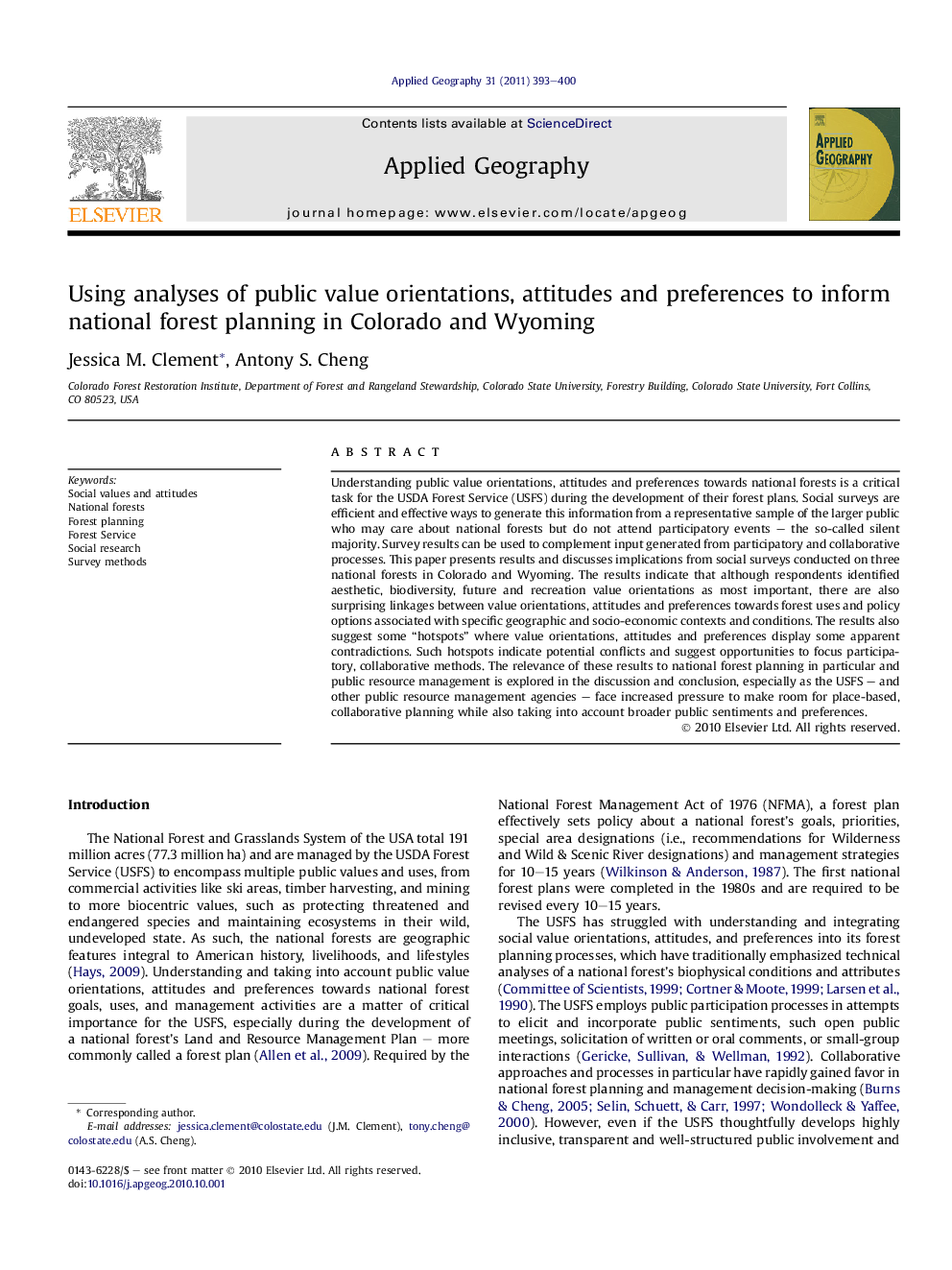| Article ID | Journal | Published Year | Pages | File Type |
|---|---|---|---|---|
| 83750 | Applied Geography | 2011 | 8 Pages |
Understanding public value orientations, attitudes and preferences towards national forests is a critical task for the USDA Forest Service (USFS) during the development of their forest plans. Social surveys are efficient and effective ways to generate this information from a representative sample of the larger public who may care about national forests but do not attend participatory events – the so-called silent majority. Survey results can be used to complement input generated from participatory and collaborative processes. This paper presents results and discusses implications from social surveys conducted on three national forests in Colorado and Wyoming. The results indicate that although respondents identified aesthetic, biodiversity, future and recreation value orientations as most important, there are also surprising linkages between value orientations, attitudes and preferences towards forest uses and policy options associated with specific geographic and socio-economic contexts and conditions. The results also suggest some “hotspots” where value orientations, attitudes and preferences display some apparent contradictions. Such hotspots indicate potential conflicts and suggest opportunities to focus participatory, collaborative methods. The relevance of these results to national forest planning in particular and public resource management is explored in the discussion and conclusion, especially as the USFS – and other public resource management agencies – face increased pressure to make room for place-based, collaborative planning while also taking into account broader public sentiments and preferences.
Research highlights►Using same survey methodology to study values and attitudes in three studies ►Compare values and attitude results across three forests ►Application of social values studies to support forest planning and collaboration ►Detection of possible values and attitude hotspots in forest planning
